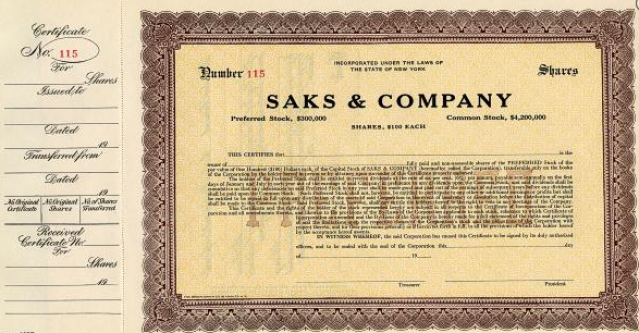Preferred stock ideas Fidelity Viewpoints
Post on: 1 Июль, 2015 No Comment

Your e-mail has been sent.
Source: FactSet
Will preferred stocks continue their momentum? And are there opportunities for investors right now? If you’ve got an appetite for income-oriented investments, here are a few preferred ideas to consider.
Looking for high yielders
While preferred securities generally pay higher dividends than most common stocks, they are not likely to produce much in the way of capital gains. That may be fine if you gravitate toward preferreds for the income they offer. In fact, a common strategy for some preferred stock investors is to search for the highest-yielding instruments.
As of February 24, 2014, the highest-yielding preferred stocks are The Dolan Company ( DOLNP ), with a dividend yield of 85.8%, Molycorp, Inc.. featuring a dividend yield of 47.2%, and Supertel Hospitality, Inc. ( SPPRO ), which has a dividend yield of 19.2%.
High income and a strong balance sheet
Preferred 411
Preferred securities have some of the characteristics of both stocks and bonds. Preferred stock has a higher claim to assets than common stock (i.e. if a company is liquidated, preferred shareholders would be paid before common shareholders) and they tend to offer fixed, higher dividends than those paid on common stock. However, preferred shareholders do not typically have voting rights.
Looking only for the highest-yielding preferred stocks might not be a sound strategy, though. In exchange for the outlier high yield, you may be taking on additional risk because these companies may not be in very good financial shape. Instead, you might want to seek out high-yielding preferred stocks offered by financially healthy companies.
Fidelity offers the Preferred Securities screen, provided by Zachs Investment Research. The goal of this filter is to find financially strong companies with preferred securities that seek to offer above-market dividend yields.
As of February 24, the top preferred stocks produced by the screen are Cys Investments, Inc. ( CYS/PB ), yielding 8.85%, Northstar Realty Finance Corp. ( NRF/PB ), yielding 8.66%, and Amtrust Financial Services, Inc. ( AFSI/PA ), yielding 7.74%.
Big movers
Preferred stock typically trades within a narrow band, anchored by its original issue price. These stocks don’t typically participate in the price surges that a common stock might see.
Nevertheless, preferred stock can experience price appreciation. Preferred stocks showing the most acceleration in the last five days versus the last month (1-week performance divided by 4-week performance) are Intelsat SA ( I/PA ), Goldman Sachs Capital I Securities Backed Series 2004 Class A 1 ( GS/PA ), and Unisys Corp. ( UIS/PA ).
Where to find preferred stock

Similarities to bonds
Because preferred securities’ primary attraction is their dividend rate, not their capital gains potential, their prices tend to behave like bond prices—going down when interest rates go up, and vice versa. Common stock dividends may move higher if a company does well, but the dividend rate on preferred stock is usually fixed at issuance.
Screens like the ones above can help you find specific candidates. You may be wondering where there is a high concentration of preferred opportunities. Any company can issue preferred stock; indeed, you can find preferred stock in every quadrant of the market. However, utility companies, banks, and other financial institutions tend to offer preferreds, more so than others.
When volatility is on the rise, as it has been through the early part of 2014, preferred utility stocks in particular can provide several benefits. Utilities are a defensive sector that tends to outperform when the market is under pressure. Couple that with the income component of preferreds, and utility preferreds have the potential to help limit the impact of volatility on your portfolio.
Of course, utility preferreds are generally not as resistant to the effects of downturns as most bonds. That said, utility preferred stocks—along with other defensive preferred sectors like consumer staples and health care—can offer some measure of protection, compared with common stock, when the market hits a rough patch.
Instead of getting tactical with specific sectors, you may want to consider obtaining broad exposure to the preferred market by investing in ETFs such as the iShares S&P U.S. Preferred Stock Index ( PFF ), which is the largest preferred-stock ETF, as well as the PowerShares Preferred Portfolio ( PGX ) and Global X SuperIncome Preferred ( SPFF ).
Watch out for rising rates, credit risk
Preferred stock risks
There are other risks that should be assessed when deciding whether to invest in preferred stocks. These include call risk, credit and default risk, inflation risk, liquidity risk, market risk, maturity extension risk, and payment deferral risk.














